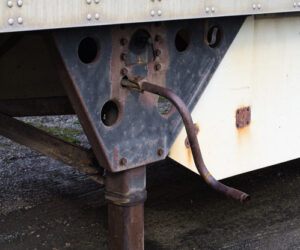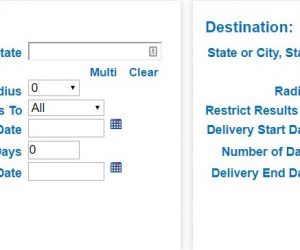On October 27, 2017, the Federal Motor Carrier Safety Administration (FMCSA) formally proposed a pilot program for testing changes to hours of service (HOS) regulations. Current regulations require drivers to take at least 10 hours of rest per day, with at least eight consecutive hours of sleeper berth time. If hours of service requirements change to a split sleeper berth schedule, drivers would have more control over when and how they rest.

How the New Rule Would Change HOS Regulations
Current regulations allow drivers to split some of their sleeper berth time, but options are limited. Drivers can take ten consecutive hours of sleeper berth rest, split rest time into nine consecutive hours and a one-hour break, or take eight consecutive hours of rest and a two-hour break.
The proposed rule offers drivers more leeway. Drivers can still take ten consecutive hours of berth time if they wish. However, they can also split berth time into periods of three and seven hours, four and six hours, or two equal five-hour periods.
Split Sleeper Berth Rule Example
A driver has been on duty for six hours. She knows that rush hour traffic lasts from 4:00 – 7:00 p.m. in a major city on her route. To avoid adding to the congestion, she needs to take a three-hour break. She must also account for the 14-hour window of on-duty time that starts at the beginning of her day. The 14-hour window will not reset until she completes at least 10 hours of rest. Because there is a limit of 11 hours of drive time within the 14-hour window, she only has five hours of drive time left.
Under current HOS regulations, her options are limited. She can take a three-hour break, but she must also complete an eight-hour sleeper berth period to restart the 14-hour window. This increases her mandatory rest time from 10 hours to 11 hours. If she allows an hour to find parking for the night, she has only three more hours to spend on the road.
Under the proposed split sleeper berth rule, the three-hour split does not increase her mandatory rest time. Instead, she can shorten her second rest period to seven hours, effectively restarting the 14-hour on-duty period.
New Split Sleeper Berth Rule Could Improve Driver Health
FMCSA proposed the study in response to data from 2010 and 2011 in-house laboratory tests that showed the negative effects of consolidated sleep during daytime hours. Participants who slept during daylight hours slept less and were more fatigued when awake. By the end of the work week, the same participants also registered higher blood sugar and testosterone levels. High blood sugar is a contributing factor in Type 2 diabetes. Testosterone is a male hormone that can increase aggressiveness in excess.
The agency also considered feedback they received from drivers during HOS rule-making sessions. Several drivers requested greater flexibility in using rest breaks and sleeper berth hours.
Studying New Split Sleeper Berth Rule Effectiveness
The study that FMCSA is proposing will help determine whether the new rule would have a positive impact on driver health. The theory is that increasing rest time and flexibility will help drivers avoid excessive daytime rest and improve driver alertness. For example, a fatigued driver can take a four-hour rest break during the day to recharge and then finish with a six-hour rest time during the evening hours.
Most laboratory sleep studies show that split rest breaks are either beneficial or have no effect on alertness. However, the breaks must be well-timed for split rest periods to work properly. The FMCSA will study real-world results to determine whether a more flexible sleep schedule would improve driver safety.
Real-World Testing Equals Practical Results
Participating drivers and their companies will consent to share several monitoring data forms. The data collection methods include
- Electronic logging devices (ELDs) to help document rest breaks, on-duty time, driving hours, and restart breaks.
- Onboard monitoring systems help researchers evaluate road conditions, speed, driver response time, and safety-related events such as collisions or near collisions.
- Drivers and carriers agree to provide roadside violation data, which includes hazmat and cargo violations, vehicle violations, and duty status violations.
- Participating drivers will wear a wrist ActiGraph (similar to a Fitbit or another fitness tracker) to help evaluate sleep time and quality; the trackers will also document sleep hours.
- Drivers will use sleep logs to document sleep hours when they are sleeping in the berth and the reason for choosing to split their rest time on split rest days.
- Participants will also undergo several tests, including psychomotor vigilance testing, to evaluate alertness and response times. Drivers will also rate themselves on the Karolinska Sleepiness Scale to determine how each driver perceives their fatigue levels.
The FMCSA hopes the data will prove whether split sleep schedules work well for drivers in real-world scenarios.
Study Size and Duration
The agency plans to study at least 200 drivers from small, medium, and large carriers. Participants must use their sleeper berth on a regular basis. They must also have completed the North American Fatigue Management Program.
Participants will complete the study in 90-day cycles. FMCSA has allotted a minimum of five such cycles to gather statistically significant data. The study is slated to begin in February/March of 2018. Drivers who wish to participate in the study can go to the Sleeper Berth Study to apply. You must complete a questionnaire and provide written consent to be eligible for the study.
The wheels of bureaucracy turn slowly, and this most recent FMCSA action is the latest in a series of actions stretching back to the beginning of the decade. The agency has allotted a maximum of three years for the study. Even with a positive outcome, it may be several years before drivers see a regulation change. However, the proposed sleeper berth rule study is a step in the right direction for driver and highway safety in the trucking industry.



 The transportation industry is America’s lifeblood, by carrying vital food and supplies across the country. ...
The transportation industry is America’s lifeblood, by carrying vital food and supplies across the country. ...

